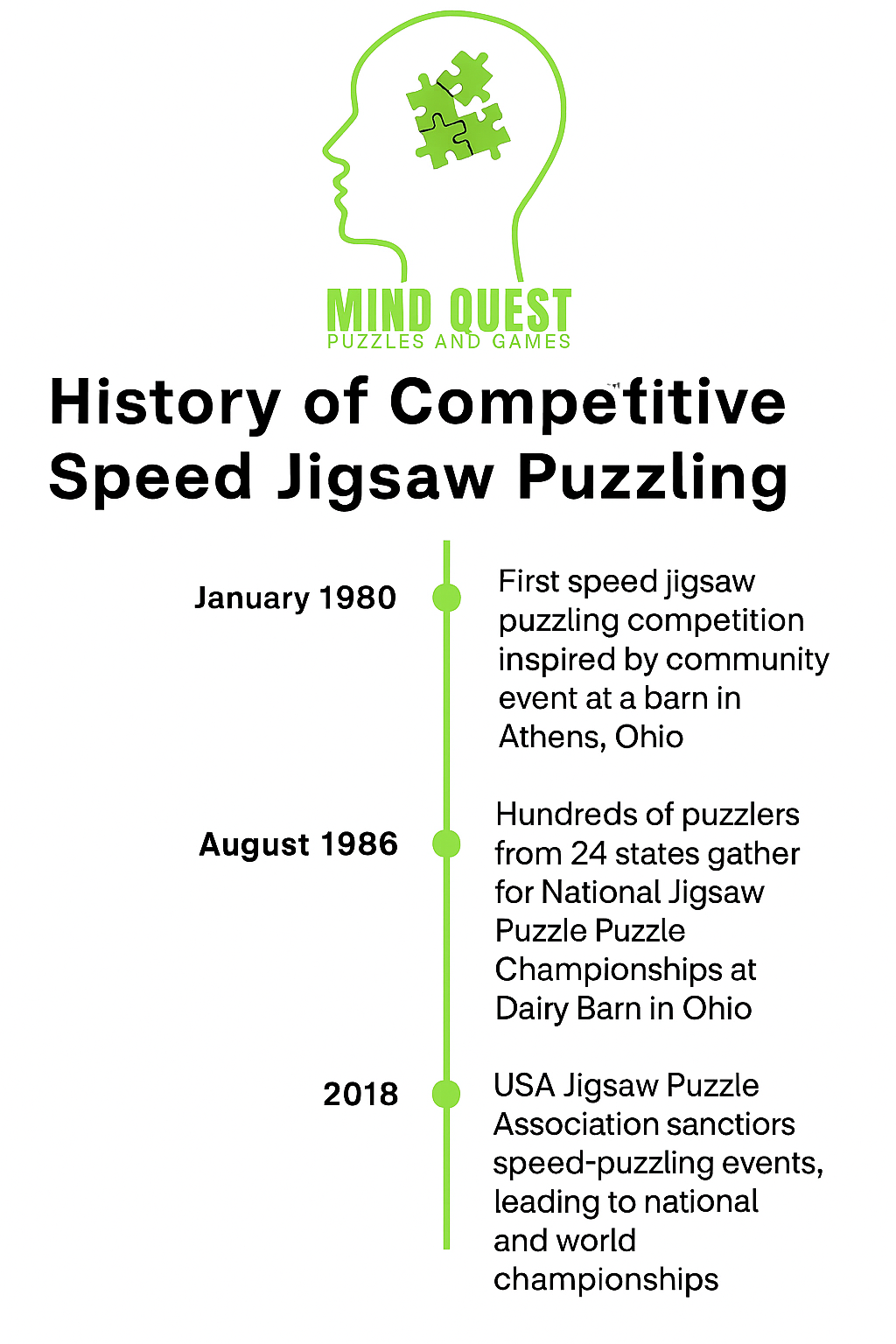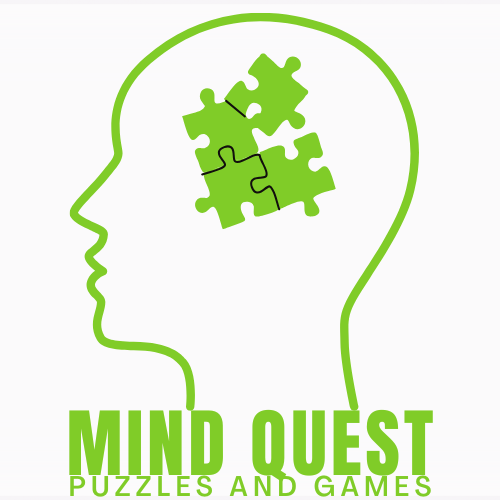
From Barn to World Stage: The Rise of Speed Jigsaw Puzzling”
Share
From Dairy Barn to World Stage: The Rise of Speed Jigsaw Puzzling
By Mind Quest Puzzles and Games — A brief history, competitive overview, and how you can get started
Speed jigsaw puzzling turns a familiar living-room pastime into a high-energy, timed competition. This post traces the sport’s early roots in Ohio, explains how national and world championships developed, and gives practical tips so you or your team can try a timed event.
How competitive puzzling started — the Ohio origin story
The dramatic, community-driven origin story of competitive (or “speed”) jigsaw puzzling is rooted in early events held in Ohio. These contests transformed the puzzle hobby into spectator-friendly competition: sealed boxes, race clocks, and crowds cheering as competitors dumped pieces and raced to a finished image.

What is Speed Jigsaw Puzzling?
Speed jigsaw puzzling is exactly what it sounds like: competitors race to complete a jigsaw within set rules and time limits. Events typically use 500- or 1,000-piece puzzles; competitors may participate individually, in pairs, or on teams. Speed events emphasize rapid sorting, efficient edge-building, and clear division of labor when working in teams.
Common event formats
- Individual — one person completes the whole puzzle.
- Pairs — two people split tasks (sorting vs. assembly).
- Teams — typically 4+ people; each member may specialize.
How winners are decided
Fastest time to a finished puzzle wins. If no competitor finishes within the time limit, placement may be determined by the number of pieces correctly placed or completed sections.
From local contests to Nationals and Worlds
What started as local meetups in Ohio grew into organized national championships and—eventually—a formal world championship circuit. Governing bodies and associations now provide rules, ranking systems, and event calendars. Modern World Championships include individual, pairs, and team events, often at multiple piece-counts and strict time controls.
Large, public competitions in Ohio drew contestants from many states and showed the public-facing appeal of timed puzzling.
Regional tournaments and clubs spread the format across the U.S., with local libraries, game stores, and community centers hosting timed events.
National championships and internationally organized world competitions formalized rules and created a competitive calendar for top puzzlers.
Tips to get started (for casual or competitive puzzlers)
Practice drills
- Time a 100-piece section to train speed with pattern matching.
- Work edge-only drills to practice building the frame fast.
Race-day strategy
- Immediately separate edge pieces and distinct color clusters.
- Assign roles early (sorters vs. assemblers) for pairs/teams.
- Use trays or shallow bins to keep sorted groups visible and accessible.
Why this matters to Mind Quest Puzzles and Games
At Mind Quest Puzzles and Games we celebrate both the quiet joy of a slow puzzle night and the adrenaline-filled energy of speed puzzling. Hosting timed events is a great way to grow community, introduce competition-minded customers to your store, and spotlight a unique niche: speed jigsaw puzzling.
See upcoming events & sign up